
Louis D
-
Posts
9,363 -
Joined
-
Last visited
-
Days Won
1
Content Type
Profiles
Forums
Gallery
Events
Blogs
Posts posted by Louis D
-
-
Back when I was regularly using my 15" truss Dob, I would use the laser to do rough alignment by getting the return laser beam to coincide as closely as possible with the outgoing laser beam on the secondary mirror (which is plainly visible from the back of the scope) while at the back of the scope. I would then use the Rigel Aline to tweak the collimation incrementally going back forth between the focuser and rear of the scope. This method obviously won't work for a solid tube telescope, though.
-
I can't figure that out, either. The numbers from a digiscoping calculator indicate that until I get to an 8mm eyepiece, there is no decrease from the camera's f/2.4 native f-ratio for the 127 Mak and 3.5mm for the refractor. And yet, eyepiece for eyepiece, I'm seeing more pronounced SAEP in the f/12 Mak than in the f/6 refractor. However, the effective f-ratio remains f/2.4 for both.
-
1 hour ago, johninderby said:
Their custom adaptors are a fixed price. 85 Euros.
All up, excluding VAT but including shipping, that's well over $250 for the focuser, adapter, and extension. 😱 I only paid $200 for each of my used 127mm Maks. I'll probably take a hard pass on adding one to either of my scopes. Thanks for the information, though.
-
1 hour ago, Ricochet said:
Some of those are quite extreme. Is some of the problem made worse by having the wrong spacing between the eyepiece and camera? If you were to see that visually many of those eyepieces would be completely unusable.
It's because of the slow f-ratio of the scope combined with the slow f-ratio of the camera. My Galaxy S7 camera is faster and picks up less of the SAEP in comparison. It mostly shows fleeting shadows instead of donuts. In my AT72ED f/6 refractor, some of the worst offenders show SAEP with the slow camera and only the worst of the worst show it in the faster camera.
The analogous situation for the slow camera would be daytime, solar, or lunar observing where the eye's pupil constricts significantly, blocking more midfield rays as @Ruud shows quite clearly in this animation:


At night, with a fully dilated pupil, SAEP becomes much less problematic.
Camera-eyepiece spacing was at the exact point the full field stop came into view. Obviously, pushing in further reveals blackouts, but not of the SAEP type. Also, if you back off, you can avoid a lot of the SAEP as the two Meade MWA 26mm images show, but you lose some of the available field of view. Both situations are shown in another of @Ruud's excellent animations:

Notice that it is edge rays, not midfield rays, that are truncated first in this situation. Neither being too close nor too far would show the black midfield rings I photographed.
Some folks have complained about "finicky" exit pupils in the NT4s, Meade 4000 UWA 14mm, and the ES-92 12mm. I believe it is undiagnosed SAEP that has been causing it.
-
 2
2
-
-
37 minutes ago, Ricochet said:
A thread I think well worth reading is http://astro-talks.ru/forum/viewtopic.php?f=32&t=1483 which attempts to give measurements for the aberration size for quite a large selection of eyepieces. The 16mm Nirvana is listed under United Optics UWA(N) and the author agrees with you, the 16mm is poorly corrected.
According to the above website the Luminos is a touch better at f4 but about even at f10.
It definitely matters at what f-ratio you test them. The NT5 16mm is pretty much immune to fast focal ratios compared to the UO and Celestron equivalents. At f/10, there's much less to separate them, though.
-
 1
1
-
-
21 hours ago, johninderby said:
There is a link on the same page as the focuser but here is the direct link. The adaptor is a custom order.
https://www.teleskop-express.de/shop/product_info.php/info/p9286_TS-Optics-custom-made-Adapter.html
I saw that link. I was surprised they didn't have the SCT adapter in stock since it would be the most common. What did they charge for the custom order when you bought yours?
-
I took a bunch of photos of the fields of view (FOVs) of many of my 12mm+ eyepieces in my Orion (Synta) 127mm Mak using a 2" visual back and 2" diagonal using an LG G5 phone's superwide angle camera. This scope and camera combination really shows any spherical aberration of the exit pupil (SAEP). I composited together a bunch of the most interesting images with the worst SAEP offenders on the left and the best on the right. Rows are arranged by focal length, although I sometimes cheated and put interesting images on a nearby row to avoid the composite image getting too wide.
I hope y'all find this interesting. It might help to explain why some people don't get on well with certain eyepieces.
Shadowing is nascent SAEP. Rainbows indicate chromatic aberration of the exit pupil (CAEP).
I had difficulty suppressing eye lens reflections on some of the Rini eyepieces, so they look kind of funky as a result. I included them because they are purely positive eyepiece designs that show lots of SAEP.
-
 3
3
-
-
Check your local library to see if they have a 3D printer available for use by card holders. My daughter used the one at our local library to print things for fun back in high school (8 years ago). I think there was a 4 inch cube size limit and one project per week limit. I would imagine they have an improved printer by now.
-
28 minutes ago, Ags said:
Oh, I have tried! The Nirvana 16 has been in an ST80, Skymax 102, C6 at F10 and C6 at F6.3 (with flat field). It behaves consistently in all of them.
...And then on some nights it gives phenomenal views of the moon. Can eyepieces be subject to tidal forces?
As far as affordable UWAs, has any done a head to head between the Nirvana 16mm and the Luminos 15mm? The latter is considered one of the best of that line. I doubt I could use either with eyeglasses, so I'm out for comparing them. I'd be reporting all sorts of astigmatism across the entire field without eyeglasses.
-
4 hours ago, Don Pensack said:
The Apollo 11 shows the eyepiece needn't be huge in order to have long eye relief or excellent correction without that kind of glass.
It's 85° and 530g (620g with the 2" adapter), versus the 12mm ES 92°, with equally long eye relief, at 1017g
Too bad it's price makes the Noblex 12.5mm look affordable.
-
 1
1
-
-
49 minutes ago, johninderby said:
The focuser isn’t too expensive but the custom adapter to fit an SCT thread isn’t cheap. However still way cheaper than an FT. Good focuser too. Sort of a mini Steeltrack.
Do you have the TS link for the SCT thread adapter? Thanks! 😁
-
1 hour ago, Dantooine said:
I’m at the same point in deciding which ones to keep. Someone will get some bargains at some point. The biggest expense in this hobby is the ones you sell 🤔
Or just never sell and become an astro hoarder like me. 🤪 I enjoy going back to compare newer acquisitions against older ones. My grown daughter also gets to borrow some really nice eyepieces without having to spend any money at all, so there is that as well.
-
 2
2
-
 1
1
-
-
Could you link to a source for those little arms? I can't recall ever coming across them before, so I wouldn't know what search arguments to put into google to find one. Thanks! 😁
-
 1
1
-
-
1 hour ago, michael.h.f.wilkinson said:
Colour tone can be corrected by the coatings, of course at the expense of transmission. I really didn't notice any colour tone in either the XWs or the SLVs. I did notice it in the Radian 8 and 10 mm EPs I used to have, but it didn't really bother me
My Vixen LV 9mm always seemed to view a bit dark, but I never noticed any distinct color tone, although I never specifically went looking for it. Despite seeming a bit dark, it didn't seem to affect dim stars right at the edge of visibility relative to other eyepieces.
-
56 minutes ago, Don Pensack said:
To my knowledge, TeleVue doesn't use lanthanum oxide glass in the Ethos, Delos, or Delite eyepieces in order to avoid a hang up in supply if China decides to double the price of lanthanum oxide
or cut off Japan's supply completely, as has happened in the past.
Thanks for confirming that as that was my understanding as well. It would be interesting for Al or Paul to discuss what changes had to be made to account for the loss of lanthanum glass as a design option. Have they ever given a talk on the subject to your knowledge?
-
 1
1
-
-
8 hours ago, Ags said:
Just to clarify my above statement - Lanthanum is a rare earth element, so to say the eyepiece has a lanthanum element is the same as saying it uses rare earths.
Yes, I got that. Perhaps something else contributed to the coffee tone.
That may be why production was moved to China, to get Lanthanum glass cheaper. China has pretty much cornered the rare earths market and is reserving them for use "in house" by inflating prices to everyone else. It's one of the main reasons the Radians were discontinued because new productions runs outside of China had become cost prohibitive.
-
 1
1
-
-
3 hours ago, John said:
Awesome sauce! 🤩
Putting them side by side makes it easier to see the changes from one line to the next.


Probably the most novel XW contribution was the introduction of the intermediate lens between the negative and positive groups in the 7mm, 10mm, and 14mm versions. Something similar was used in the Ethos and ES-100 eyepieces a few years later:

I would guess it helps to realign and corral the ray bundles as they are being spread out on their journey from the negative group to the positive group. However, I don't know if it field flattens, reduces astigmatism, reduces chromatism, or a does little bit of each. Perhaps @Ruud might know.
-
 1
1
-
-
2 hours ago, markse68 said:
why would you do that ?!?😳
To increase the distance between eyepieces for binoviewer usage. Not everyone has wide set eyes and/or a narrow nose bridge. Some folks decloak the already narrow TV Delites because their nose is too big to fit between them.
-
5 hours ago, markse68 said:
Do you know what year they were released?
According to this website and Bill Paolini's eyepiece book on page 14, 1996 seems to be the agreed upon year for the XLs. The XWs came out in 2003.
-
 1
1
-
-
4 hours ago, John said:
For the cost and trouble of the changed visual back and a decent 2 inch diagonal one could almost have bought a pre-owned a 130mm F/5 newt or 120mm F/5 frac and have a proper wide field scope to compliment the 127 (ish ?) mak-cassegrain rather than going to great length to squeeze a few extra arc minutes of view from a scope who's strengths lie elsewhere.
Well that's my take on it anyway

Yes, but if you already have a 2" diagonal, the cost of a 2" visual back and Mak-SCT thread adapter is well under $50. I spend $300 on used sets of step-up eyepieces just to see what the fuss is about, so $50 is chump change.
With the 2" visual back, I can use my 2" eyepieces like the 22mm NT4, and 17mm and 12mm ES-92s in the little Mak. Since the visual back is solidly attached to the rear plate, I'm not concerned about mechanical deformation with these heavy eyepieces, either.
Also, I don't always have the AT72ED or 90mm APO attached to the other side of my DSV-2B, so it's nice to be able to get to a 1.7 degree instead of a 1 degree TFOV to better take in the surroundings of larger starfields without having to swap scopes or mount an additional scope.
-
4 hours ago, JeremyS said:
How did you rate the XLs, Louis, relative to the XWs (Apart from the narrower fov of the XLs)? I presume the newer ones are generally better?
The XLs have slightly brighter background skies than the XWs. Perhaps improved coatings, scatter control, and stray light control are the reason? Sharpness wise, the XLs are more consistent across their smaller fields. The XWs tend to have more chromatic aberration in the last 15% of the field and more precise eye positioning is required to avoid seeing it. That is, if you tilt your head and realign your eye with the edge, most of the chromatism goes away in the XWs. This is just a non-issue in the XLs. Both lines are equally sharp in the central 60 degrees or so. There is variation from focal length to focal length, but it seems as if Pentax was pushing the limits of their design to gain that extra 5 degrees of field at the expense of flawless correction. Field curvature wise, the two lines track pretty closely. There wasn't any real improvement there. I think the Delos made real improvements over the XWs in terms of field flatness and edge chromatism.
-
 1
1
-
-
On 29/06/2020 at 15:08, markse68 said:
Ever seen an XL brochure? I guess there must have been one...
Yes, there were equivalent XL diagrams and specs, but I can't locate them online anywhere.
-
 1
1
-
 1
1
-
-
4 hours ago, johninderby said:
The 127 SW mak now comes with an SCT thread on it so no need for an adapter anymore.
Are you sure it's natively an SCT thread? My 2" 127 Celestron Mak version's SCT thread adapter just screws off revealing the original 45.4mm Mak thread. I can't imagine Synta makes two different versions for the Celestron and SkyWatcher labels. It was a bit difficult to get it to start, but it eventually unscrewed completely off.
-
2 hours ago, michael.h.f.wilkinson said:
I really like the lot of them. I did a direct comparison between the SLV 5mm and the mighty Pentax XW5, which is the only pair that matched directly in terms of focal length, and the little SLV 5 held its own in all matters except FOV. It is comfortable, very sharp, very neutral in terms of colour (the old LVs had a slight brown cast, I seem to remember, especially the 7). Yes I prefer the XW, but that is only down to FOV. In more than one outreach event people were struggling to get good eye position with something like a 10mm Ortho. I lent them my 9mm SLV, and they were immediately impressed, both in terms of comfort and the tack sharp image. They immediately wanted to know the type, how much they cost, and where to buy one.
I wonder if Vixen discontinued the use of rare earth glass types in the SLV line to keep down expenses. I know that both the Vixen LVs and TV Radians used rare earth glasses, and both were accused of having slightly dimmer, coffee toned images as a result.





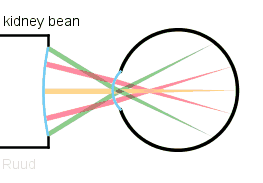
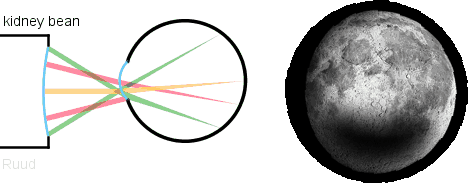
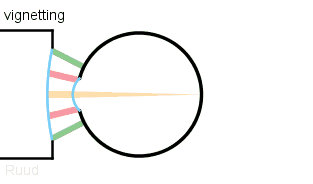




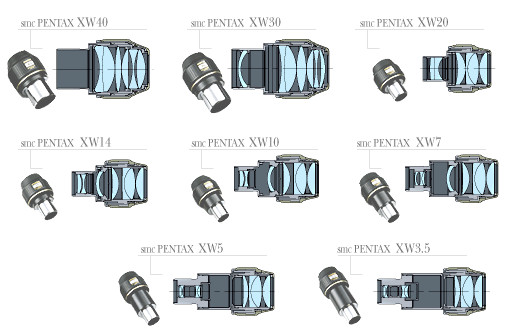
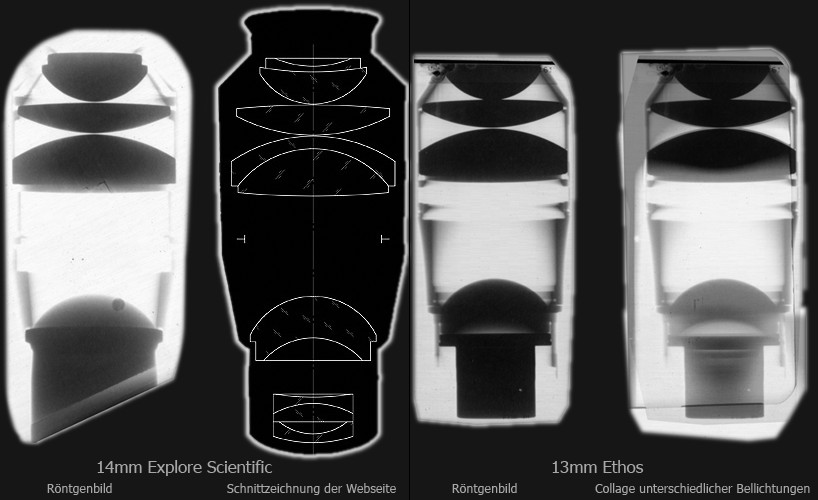

DIY SW Explorer 200P Dobsonian convertion
in DIY Astronomer
Posted
There are bunch of threads out there on Synta base mods. There's the milk jug washer mod that goes around the central bolt. I would probably replace the factory bearings and bearing surface with whatever you used on the altitude bearings.